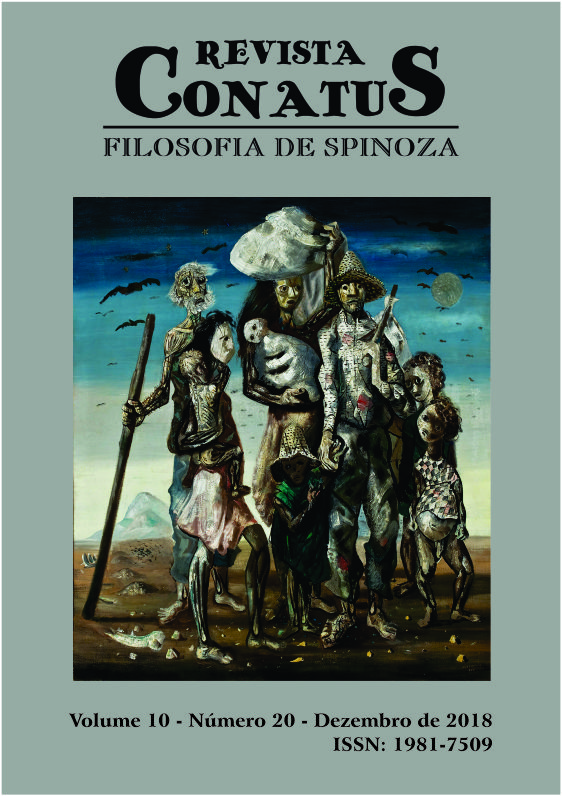Melancolia: desagrado moral para com o próprio Eu
Palavras-chave:
Freud, Spinoza, Melancolia.Resumo
Este trabalho pretende apresentar a concepção de melancolia a partir dos estudos de Sigmund Freud (1856-1939), dentro de sua produção “Luto e Melancolia” publicada em 1917. Neste trabalho, comentaremos como o desagrado moral para com o próprio Eu se vincula a esta dor de si mesmo. Nesta mesma produção, Freud acena para algumas possibilidades de superação do sentimento melancólico sem, contudo, minuciá-las. Destarte, tentaremos aproximar o entendimento de Freud acerca desta profunda dor ao conceito de melancolia do filósofo holandês Benedictus de Spinoza (1632-1677). Spinoza, assim como Freud, estabeleceu uma relação entre a melancolia e os afetos de tristeza, amor e ódio, tendo como resultado a variação de nossa potência de agir e de existir. Ao final, comentaremos a possibilidade dada por Spinoza para transformarmos este afeto triste em afeto alegre, promovendo uma passagem da melancolia ao contentamento de si, assim como a superação desta dor sugerida por Sigmund Freud.
Abstract
This work aims to present the conception of melancholy in the studies of Sigmund Freud (1856-1939), in his production “Mourning and Melancholia” published in 1917. In this work, we will comment on how the moral displeasure with the Self itself is linked to this pain of yourself. In this same production, Freud points to some possibilities of overcoming the melancholic feeling without, however, narrowing them down. Thus, we will try to bring Freud’s understanding of this deep pain closer to the concept of melancholy of the Dutch philosopher Benedictus de Spinoza (1632-1677). Spinoza, like Freud, established a relationship between melancholy and the affections of sadness, love, and hatred, resulting in the variation of our power to act and to exist. In the end, we will comment on the possibility given by Spinoza to transform this sad affection into happy affection, promoting a transition from melancholy to self-contentment, as well as overcoming this pain suggested by Sigmund Freud.










